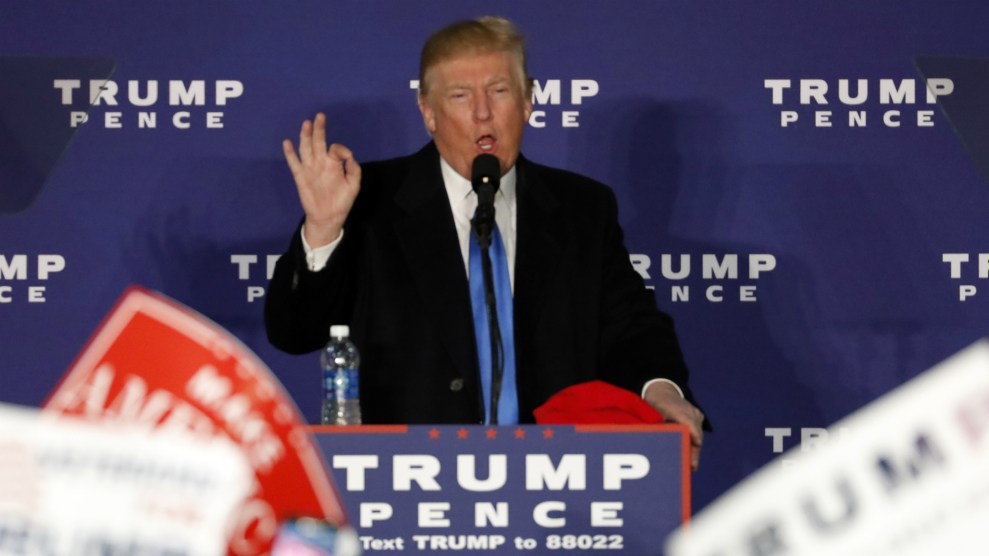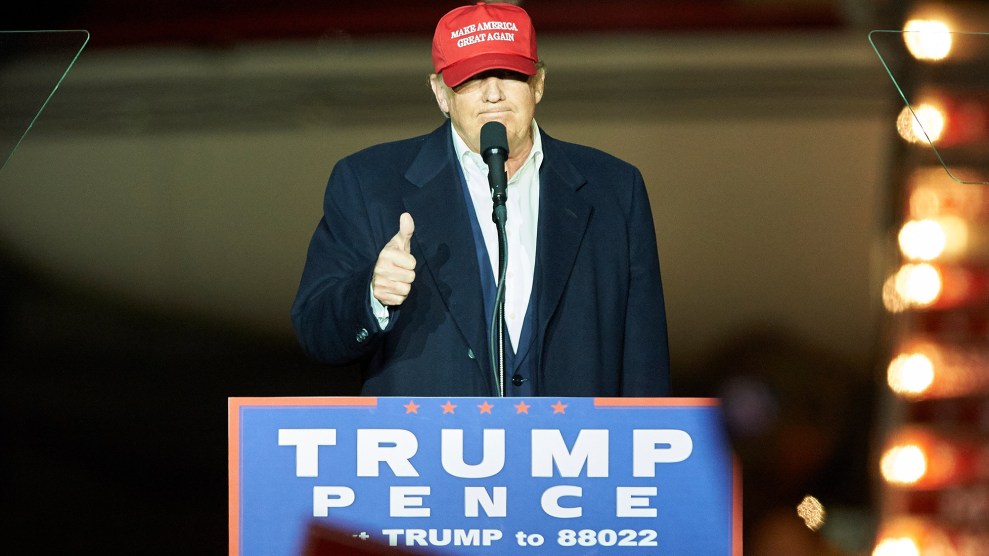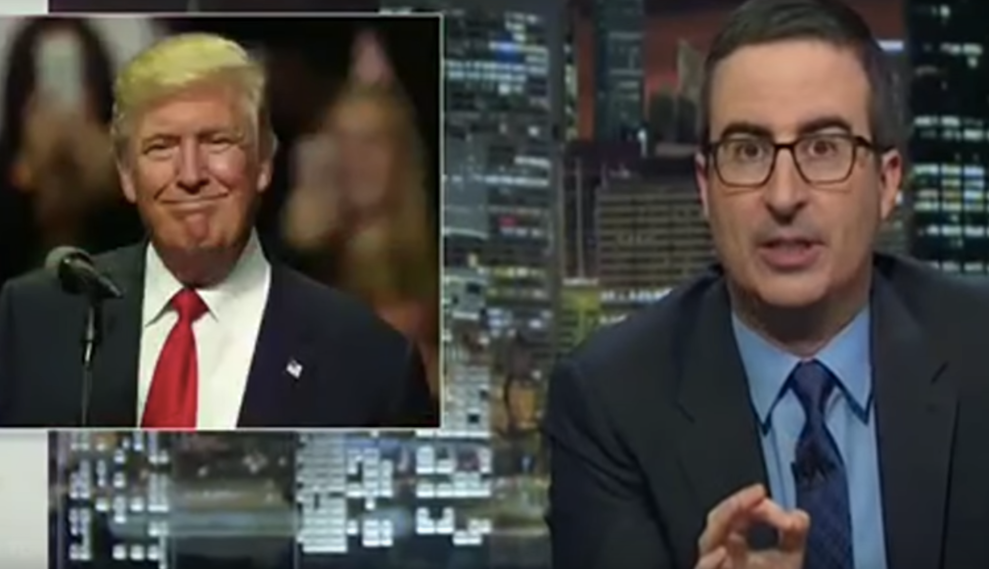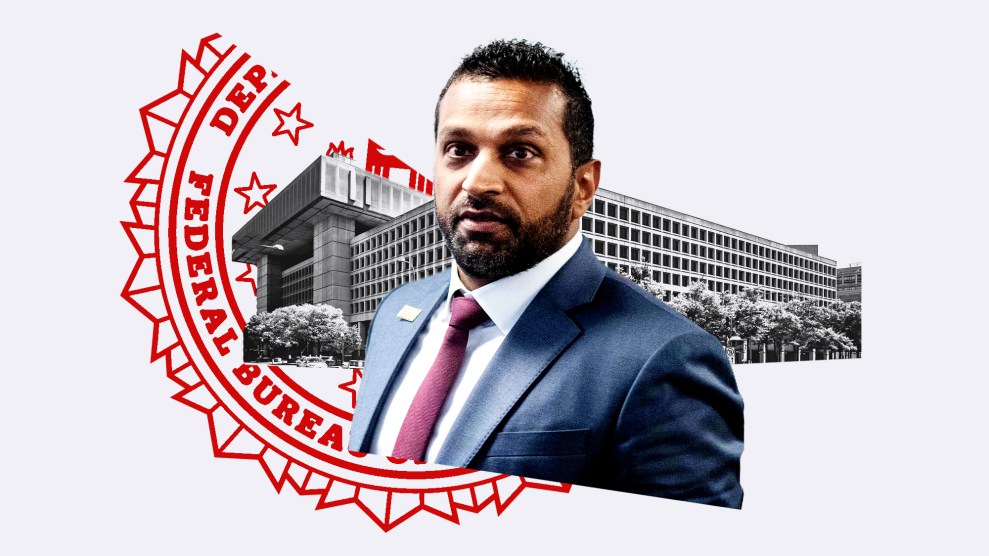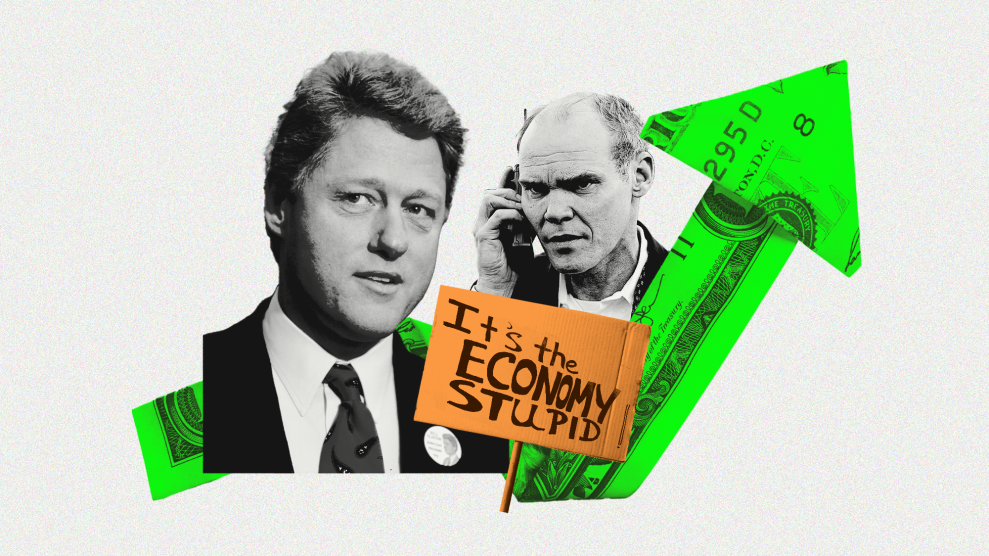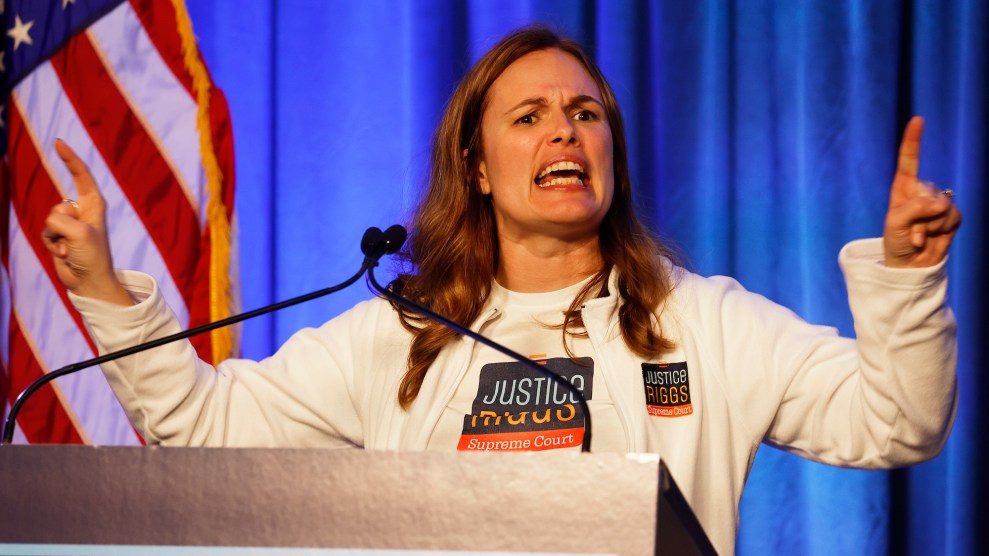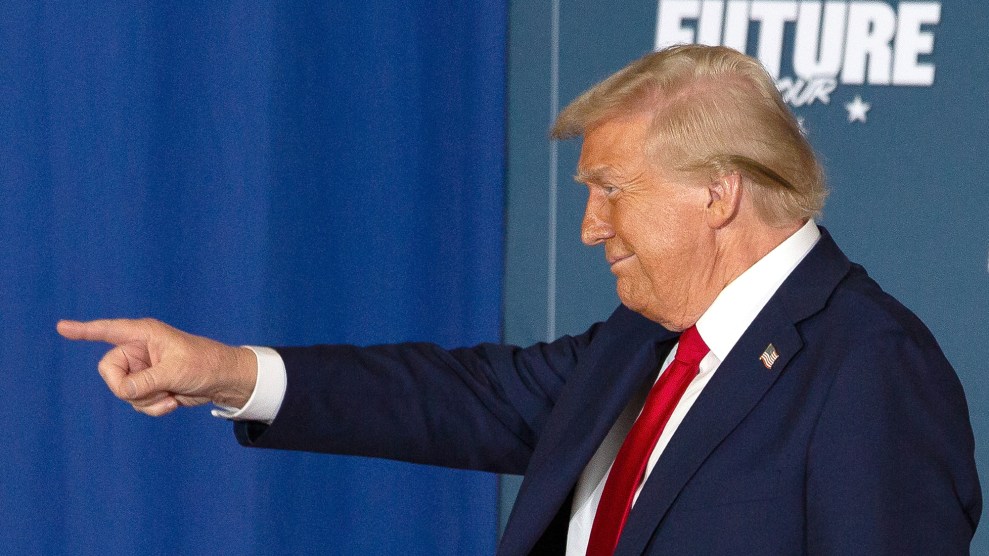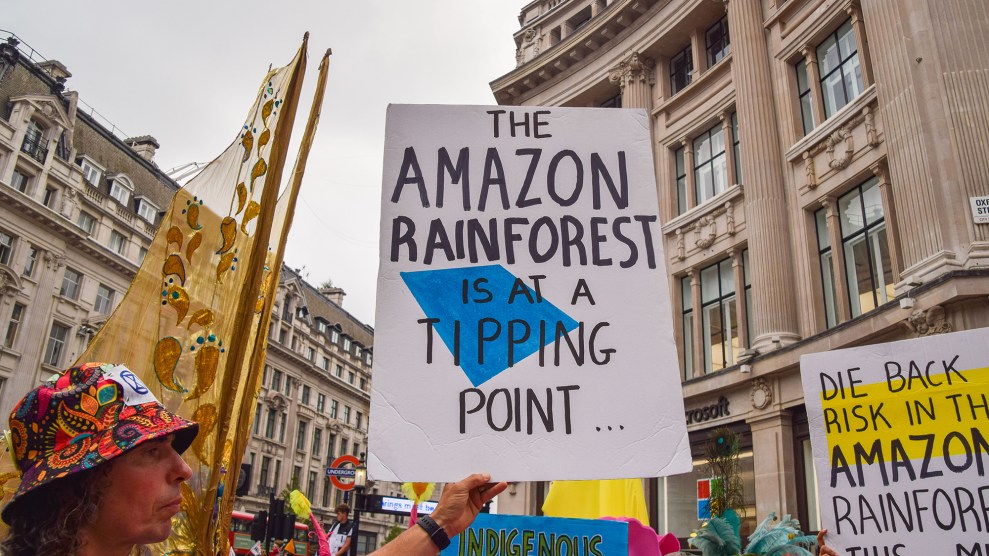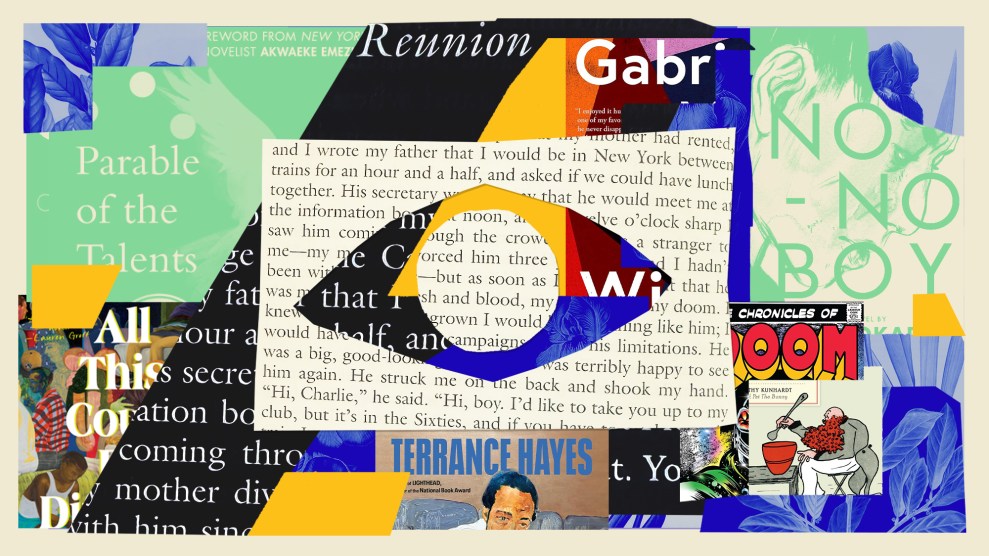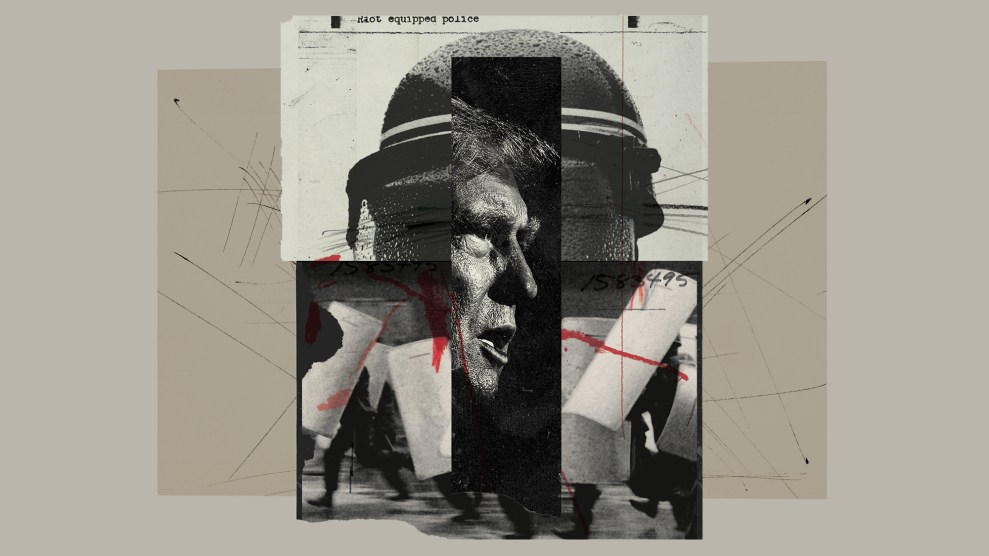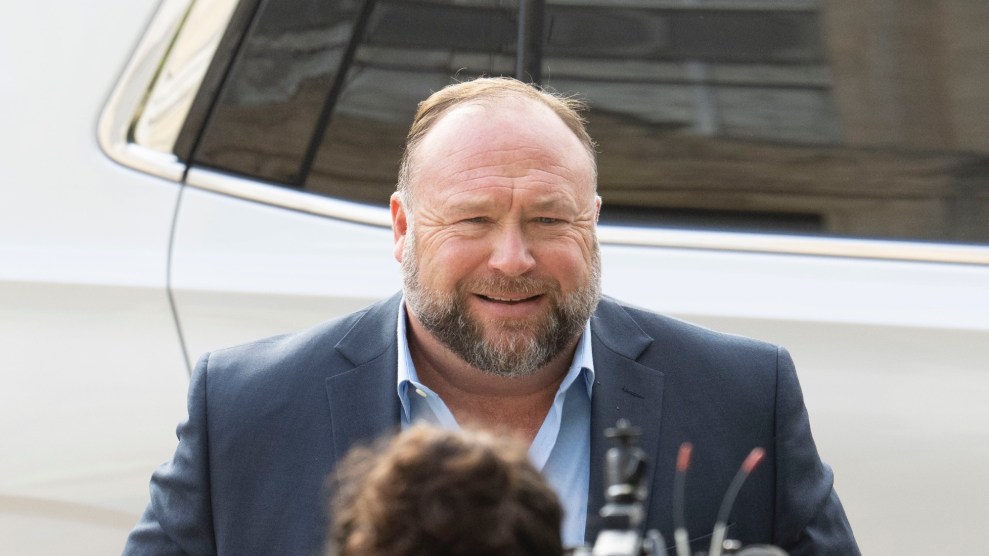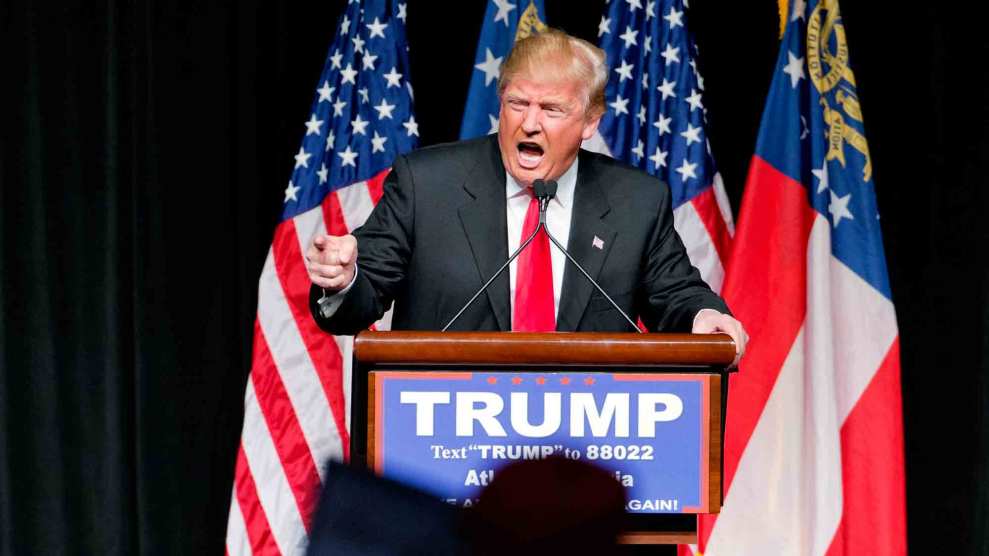
David Goldman/AP
Trumpism didn’t start with Donald Trump.
The politics of exploiting racism, bigotry, hatred, and fear has long been a core strategic component of the Republican Party. In this regard, a straight line runs from Barry Goldwater through Richard Nixon and Ronald Reagan to the current GOP nominee. It may be a tough truth for many Republicans and conservatives to handle. But the party has long relied on racial resentment and patriotic animus as high-octane fuel to power its way into office. Sometimes it has done so behind a veil of euphemisms and smiles—with what it could claim as plausible deniability. Yet with Trump as the Republican nominee this year—with a large majority of its voters and officials supporting him—the party has traded a dog whistle for a megaphone.
Here was a candidate directly advocating bigotry, repeatedly uttering racist statements, and publicly engaging in misogynistic conduct. And most of the party said this was acceptable. So on Election Day, there will be a variety of ways to define this presidential election. Continuity or change? Will Hillary Clinton be judged a policy wonk who cares about the public interest or a cynical, status quo handmaiden of the elites? Will Trump be seen as a successful businessman well suited for the White House or an erratic, narcissistic huckster completely unfit for the presidency? But at a fundamental level, the election is a referendum on the explicit use of hate in politics—a reckoning toward which the GOP has been hurtling for half a century.
In 1964, Sen. Barry Goldwater of Arizona, the Republicans’ archly conservative nominee, who had vanquished moderate GOPer Nelson Rockefeller, kick-started his party’s embrace of racial politics when he campaigned against the Civil Rights Act of 1964 under the joint banners of states’ rights and individual freedom. Most prominent Republicans at the time supported civil rights legislation, as had Goldwater previously. After all, this was the proud party of Abraham Lincoln. But Goldwater’s opposition to this measure appealed to white Southern Democrats looking to hold on to segregation. He lost in a landslide to President Lyndon Johnson, but he snagged the electoral votes of the Deep South, the first Republican to do so since Reconstruction.
Goldwater, who had won over Southern white voters resistant to changing the region’s racist ways, showed Nixon the path forward. Nixon and his crew adopted what came to be known as the “Southern strategy.” In 1968, he, too, campaigned on states’ right to pander to white Southerners. (This helped him pull border states away from the Democrats, though the Deep South was bagged by George Wallace, the former Democratic Alabama governor running as an independent defending segregation.) Nixon also pushed the theme of “law and order”—a counter to anti-war and civil rights demonstrations. In 1970, Kevin Phillips, a GOP strategist associated with the Southern strategy, noted the party’s goal was to drive “Negrophobe whites” to “quit the Democrats and become Republicans. That’s where the votes are.”
In 1972, the dog-whistling aimed at angry and fearful white voters helped Nixon pull off a massive reelection victory, with Republicans questioning the American-ness of Democrats and liberals who opposed Vietnam and advocated progressive social policies. Years later, the infamous GOP strategist Lee Atwater would concede the Republican game plan was to profit from racism: “You start out in 1954 by saying, ‘nigger, nigger, nigger.’ By 1968 you can’t say ‘nigger’—that hurts you. Backfires. So you say stuff like forced busing, states’ rights and all that stuff.” In other words, Republicans were speaking in a code of hate. But the signal came in loud and clear.
Watergate broke the Southern strategy—only for a short stretch. Jimmy Carter was elected. But Reagan soon returned to these poisonous roots. He launched his 1980 presidential campaign in Philadelphia, Mississippi. This was where white supremacists had killed three civil rights workers—and Reagan took the occasion to hail states’ rights and assail the power of the federal government. Of all the gin joints in all the world, he chose this one. It was difficult to not see this as pandering to segregation-yearning Southerners. In the White House, Reagan and his gang opposed affirmative action, slammed busing to integrate schools, and argued for granting tax credits to a segregated Southern school. Reagan pushed the image of welfare queens cruising around in Cadillacs—a fiction designed for white voters who believed their tax dollars were being handed over to lazy African Americans. He also griped about the food stamps program helping a “strapping young buck” buy a steak “while you were waiting in line to buy hamburger.” (That’s not hard to decode.) Of course, Reagan’s conservative defenders denied there was any racial motivation behind these stances. But all these moves happened to play to the racism or race-driven anxieties of certain white voters. Reagan and his team also red-baited the nuclear freeze movement, which called for reducing nuclear arms, and other critics—buttressing the line of attack that some Americans were un-American.
Subsequent Republicans were less obvious in exploiting hate and fear. Vice President George H.W. Bush did try to question the patriotism of Massachusetts Gov. Michael Dukakis in the 1988 campaign, blasting him for having vetoed a bill that would have forced teachers to lead their classes in the Pledge of Allegiance. Bush also assailed Dukakis for being soft on crime, and he benefited from the infamous Willie Horton ad that was widely criticized as racist. Bush presented a kinder and gentler version of law and order.
Twenty years later, while running against the first black presidential nominee from a major party, Republican Sen. John McCain tried to correct a supporter at a town hall meeting who had said Barack Obama was “an Arab.” McCain replied, “I have to tell you, Sen. Obama is a decent person and a person you don’t have to be scared of as president of the United States.” The crowd booed, with members of the audience shouting that Obama was a “liar” and a “terrorist.”
It was a swell moment for the former POW. But what could McCain expect? His handpicked running mate, Sarah Palin, was on the stump saying that Obama was “palling around with terrorists” and pushing socialism. She declared that only some parts of the United States were “pro-America.” At McCain-Palin rallies, GOP supporters, referring to Obama, shouted “kill him” or “off with his head.” Little of this was discouraged. And conservatives and Republicans had been disseminating crazy notions about Obama: He was a secret Muslim, he was born in Kenya, he had a secret plan to destroy the United States. Soon a bunch of Republican congressmen would be proud birthers.
GOP voters had become full of anger and more conspiratorial than the party’s leadership, perhaps as a result of feeding on right-wing radio for years. Some of this fury was undoubtedly sparked by racism. Obama was literally not accepted as a legitimate American. Once he became president, conservative rage ran amok, and GOP leaders jumped on for the ride. They did nothing to tamp it down. They schemed to destroy Obama’s presidency, even as an economic meltdown threatened the well-being of the nation. They made outlandish claims to stoke the already superheated fears of their votes. (Remember death panels?) Tea party rallies featured racist attacks on Obama. When the House Republican leadership hosted a tea party protest against Obamacare on Capitol Hill, members of the audience chanted, “Nazi, Nazi, Nazi,” in reference to Democrats. No GOPer criticized this.
A fever of hate and lunacy had struck the Republican Party. In 2010, Rep. Bob Inglis, a conservative Republican from South Carolina who had recently lost a primary contest to tea-party-backed Trey Gowdy, told me of a small meeting he’d had with donors during his race. “They were upset with me,” he recalled. “They say, ‘Bob, what don’t you get? Barack Obama is a socialist, communist Marxist who wants to destroy the American economy so he can take over as dictator. Health care is part of that. And he wants to open up the Mexican border and turn [the United States] into a Muslim nation.'” Inglis didn’t know how to respond. An element of the Republican base had gone cuckoo listening to Glenn Beck, Rush Limbaugh, and others who party leaders would not refute or rebuke. A wildfire was burning within the GOP base, and the Republican establishment, which decades earlier had tried to build such a fire, would not break out the fire hose.
To match the loathing within its core audience—a frenzy that had catapulted Republicans into the House majority in the 2010 elections—the party peddled hate. Former House Speaker Newt Gingrich declared that Obama was “outside our comprehension” and “that only if you understand Kenyan, anti-colonial behavior can you begin to piece together [his actions].” He said Obama’s worldview was “factually insane.” This was more racism blended with nuttiness.
Mitt Romney, the 2012 nominee who now assails the excesses and bigotry of Trump, tried to ride these dark currents. In 2011, the former Massachusetts governor asserted, “The Obama Administration fundamentally does not believe in the American Experiment.” That is, Obama was not really American. (A top Romney adviser, John Sununu, was more blunt, noting he wished the president “would learn how to be an American.”) Romney was engaging in otherism, a more subtle variant of birtherism. He was not saying Obama’s birth certificate was fishy. He was suggesting that Obama was not a true American in terms of attitude and values. This was a more sophisticated attempt at exploiting and encouraging the hatred and racism present within the GOP heartland.
Enter Donald Trump. In early 2011, he took steps to become the king of the birthers. In a speech to a conservative group that February, he said, “Our current president came out of nowhere. Came out of nowhere. In fact, I’ll go a step further: The people that went to school with him, they never saw him, they don’t know who he is. It’s crazy.” The next month, he declared, “I want him to show his birth certificate.” (Obama had already released his birth certificate.) In April, Trump announced he had sent investigators to Hawaii to dig into the matter. A week later, a poll showed Trump leading in the GOP primary, even though he had not announced a presidential bid. Crackpot conservatism had merged with reality television.
The GOP establishment didn’t mind. Trump eschewed a White House run in 2012. But in February that year, Romney, facing a tough race for the GOP nomination, looked to appropriate Trump’s star power and appeal to the conservative base. At Trump’s Las Vegas hotel, the two men appeared together, with Trump enthusiastically endorsing Romney. In return, Romney hailed Trump and remarked that it was awesome to have the developer on his team. “There are some things that you just can’t imagine happening in your life,” Romney gushed. By now, Trump was identified as the No. 1 birther, yet Romney was conveying the message that there was room within the GOP for a fellow championing a racist attack on the first black president. Not coincidentally, the Republican Party was eagerly pocketing big-money donations from Trump at this time.
Trump—who was once a registered Democrat, who was once in favor of abortion rights, who was once a fan of Hillary Clinton—was now in tight with the Republican Party. He had crashed the party, entering through an opening that had long existed within it: racism. He had appealed to GOP voters the old-fashioned way but with a new twist on the Southern strategy. Instead of exploiting white anxiety about all those black people out there, he zeroed in on one particular black person whom many white voters despised. Trump was trading in hatred, paranoia, and irrationality. No one in the GOP spoke up. No one protested.
Trump had tested the waters. His own brand of the politics of hate had connected with an audience. In hindsight, there is nothing surprising about what happened next. He entered the GOP fray, and he expanded the hate. His targets became undocumented workers, Muslims, a disabled reporter, a federal judge of Mexican descent, a female television anchor—and his fellow Republicans. He stereotyped black communities as nothing but hellhole ghettos. GOPers had long told their voters that they should distrust and detest Washington, the government, and the elites in the nation’s capital. Now Trump was cashing that check.
Trump uttered statements that House Speaker Paul Ryan, the senior elected Republican, denounced as racist. He made misogynistic comments—and was caught on video bragging about committing sexual assaults. He pitched paranoid conspiracy theories. (He and his son Donald Jr. associated with conspiracy nut Alex Jones.) Trump claimed he had seen video of thousands of American Muslims celebrating 9/11. He decried a cabal of international bankers that supposedly were plotting against him—rhetoric that was reminiscent of anti-Semitic attacks of the past. He joined forces with the alt-right, a collection of hate-spewing white nationalists and libertarians. White supremacists flocked to his campaign. During the primaries, his campaign of disgust and bullying succeeded in defeating all the party’s promising contenders. Decrying the GOP establishment, he turned Republican voters against it and mounted a hyperhostile takeover of the party.
Trump encouraged hate and violence at his rallies. He egged on attendees who struck protesters. He promised to pay their legal fees. His campaign events became places where people felt free to shout “Jew S.A.” at the media or wear T-shirts that said, “Rope. Tree. Journalist. Some Assembly Required.” Some reporters covering Trump wondered about their own safety.
Trump applied the hyperbole of his birther crusade to his presidential campaign. Clinton, his foe, was not only wrong on the issues. She was a traitorous criminal who deserved to be imprisoned. At the Republican convention, hate was rampant. Trump’s campaign made no effort to throttle back the “lock her up” cheers. Delegates walked about wearing “Hillary for Prison 2016” shirts. On multiple occasions, Trump falsely claimed she was about to be indicted. He derided her looks, her physical stamina, her intellect. A top Trump supporter in New Hampshire called for killing Clinton. His onetime butler called for killing the president.
Trump depended on fear. He declared the United States was being overrun by undocumented Latino immigrants and overwhelmed by crime—neither assertion was true—and he revived Nixon’s call for law and order. He suggested ISIS was about to invade the United States (using illegal immigrants!). He claimed the generals in charge of US policy knew nothing. He asserted that Obama was sympathetic to terrorists and absurdly insisted that Obama and Clinton had founded ISIS. The nation’s security was in the hands of fools and traitors. Americans were the victims of nefarious plots. In the final days of his campaign, Trump said that if Clinton were elected, 650 million undocumented immigrants would “pour” into the United States. In an article headlined “Trump’s Path to White House Lined With False, Misleading Statements,” CNN dryly noted, “There is no basis for the number.” (The network reported, “The Republican nominee isn’t abandoning the lies, misrepresentations and hyperbole that he has turned to time and again to bolster the arguments driving his presidential campaign.”) Throughout the campaign, Trump’s demagoguery and bigotry were not bound by facts. (Fact-checkers found that Trump made false statements at a rate several times higher than Clinton or any other major politician.)
As the leader of the Republican Party, Trump normalized hate and prejudice. He normalized name-calling and bullying. In fact, this was how he sold himself. He doubled down on mean-spirited personal attacks. Miss Universe, Khizr Khan, Carly Fiorina, Ted Cruz, Rosie—he blasted away, with no regard for civility or self-control. Vengeance was his. As a former Trump adviser told me, Trump wanted voters who desired cracked heads in Washington to see him as a tough-guy asshole. Mission accomplished.
“Make America Great Again” was a regressive slogan designed to push the buttons of voters tired of pressing 1 for English and 2 for Spanish. Trump’s chief currency was anger; his appeal was designed to capitalize on hate, resentment, and bigotry. He knew, at least by intuition, that large numbers of Republicans—if not a majority—believed Obama was born in Kenya and a secret Muslim. (Polls bear this out.) He banked on this racism-driven ignorance. With great bombast and never-ending belligerence, he fed this prejudice-shaped paranoia. And he won the support of tens of millions, with the Republican Party as his sidekick. It was an ugly campaign because hate and bigotry are the oxygen of Trumpism.
As the campaign slouches toward the end, the question before the votes are tallied is this: Can the politics of hate carry Trump into the best property in Washington, DC? In the last 16 months, Trump has dumb-downed and made crass the nation’s political discourse. He has inflamed the worst voter passions in a way Nixon could not even dream of. Will hate trump all? If Trump loses, the question after the election will be this: Is the defeat a repudiation of this style of politics? Perhaps the lesson will be that a demagogic politician can come damn close with such nastiness and could, with more disciplined and professional implementation, win the day.
This election is a choice between the two candidates. It is a reflection of a starkly and bitterly divided nation. It is also a test, decades in the making, of how far Republican hate can go.

